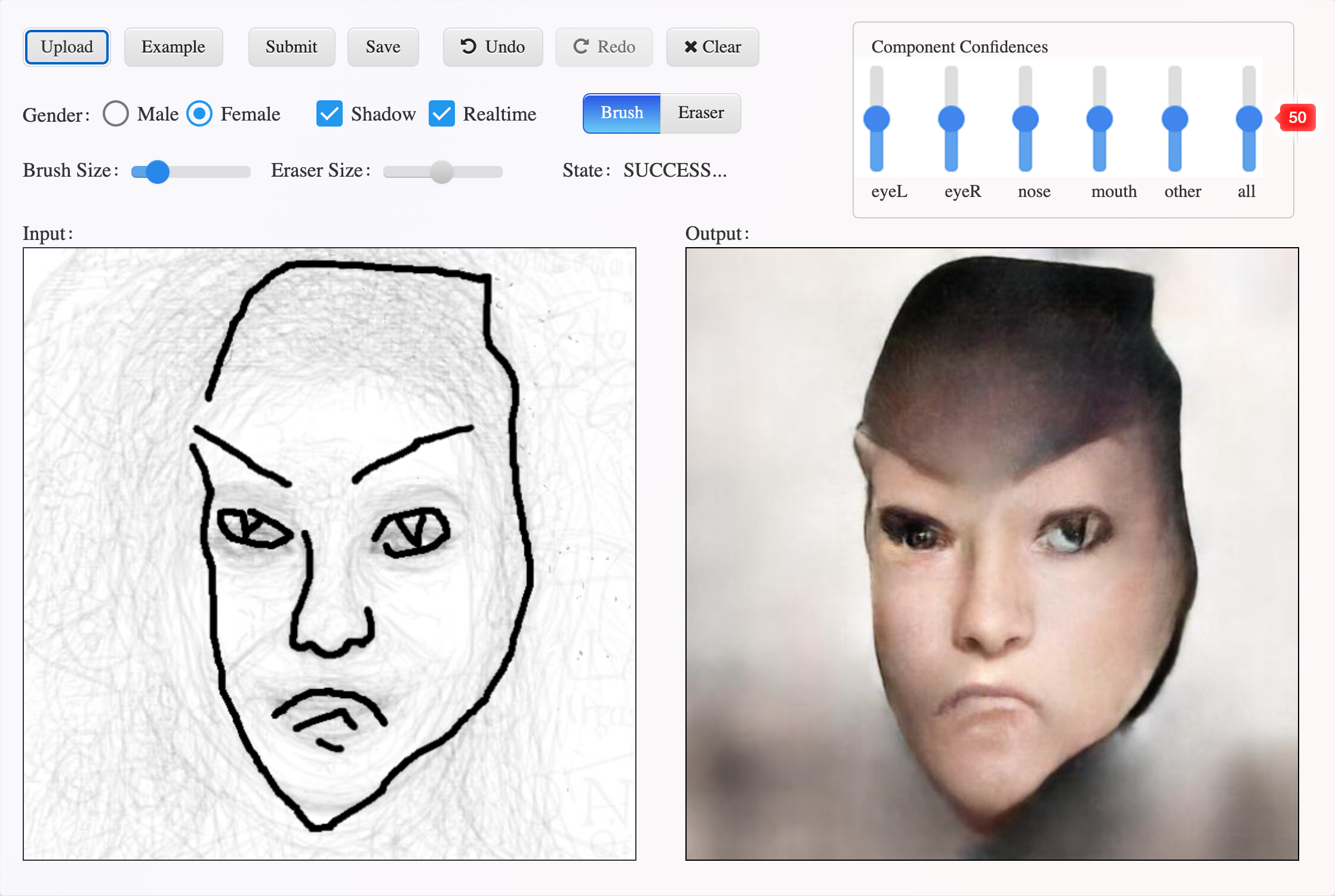
Painting with Artificial Intelligence
Painting with Artificial Intelligence
Can a machine be creative? Can it create images autonomously? If we understand artificial intelligence (AI) as a multi-faceted mirror of ourselves, this opens up new perspectives on the concepts of consciousness, intelligence and, creativity.
Description
Numerous tools offer creative interactions with AI software, thereby providing insights into the mechanisms and values underlying currently available AI applications. These devices allow hand-drawn sketches to be transformed into photorealistic images with one mouse click. Such programs generate images of faces or landscapes, for example. They are easy to use yet still allow some control over the results and variations.
Technically, a neural network uses hand drawings as image cues and generates photorealistic images from the sketches. These are based on extensive collections of sample images.
These simple possibilities of creative cooperation with an AI open up room for experimentation, and at the same time, for reflecting notions of authorship and creativity. Besides, it quickly becomes apparent how existing cultural and social expectations shape algorithmic systems and which topics and pictorial worlds are included or excluded by the AI (algorithmic bias).
Tasks and specific work steps
- Introduction:
- The topic can be introduced by briefly discussing a work of art created by AI. A good example is the “Portrait of Edmond de Belamy” by OBVIOUS Collective. In 2018, the “painting” was sold for $432,500 at a Christie’s auction. The ancient-looking “painting” auction prompted questions about authorship and copyright.
- Duration: 10–15 minutes
- Part 1: Testing
- In small groups, the students work with a tool that generates photographic images based on freehand sketches (e.g., DeepFaceDrawing for portraits, GauGAN or NVIDIA Canvas for landscapes).
- They either draw directly online or upload previously made sketches to test the tool’s image-generating capabilities.
- Goals can be, for example
- to generate “error-free” images that are as photorealistic as possible;
- to explore the extremes, the possibilities of the tool, and to provoke errors
- to substantiate their image ideas, for example: by producing a self-portrait
Screenshots are used to record the sketches and results.
- Duration: 20–30 minutes
- Part 2: Evaluation of the tests
- Based on their tests, the students discuss the questions below within their group, take notes and support their thoughts with screenshots.
- Questions may cover the following:
- Functionality and usability, possibilities and limitations of the tool
- How can I trick/hack/use the tool differently?
- Factors inherent to the system (how do the interface design and the given functions influence my expectations, actions, the work process, the result, …).
- From which visual worlds does the AI generate the image? What values underlie these visual worlds? What is included and what is excluded?
- Is the tool valuable for my work? What would need to be changed to make it usable?
- Duration: 20 minutes
- Part 3: Discussion
- The answers are compiled and discussed in a plenary.
- The following topics can be favored during the discussion:
- Who is the author of the image?
- What are this AI’s underlying values (algorithmic bias), and how is an AI trained in general?
- Can and/or should AI produce art?
- How can I use these tools? Does this way of “painting” make sense? Are the results independent works of art, or do they merely serve as suggestions?
- Duration: 20–40 minutes
- Interdisciplinary cooperation with the subjects German (on chatbots) and music (on computer-generated music) makes sense.
Sources and References
- “Portrait of Edmond de Belamy”: “Is artificial intelligence set to become art’s next medium?”:
https://www.christies.com/features/a-collaboration-between-two-artists-one-human-one-a-machine-9332-1.aspx
Additional literature on authorship:
- Jens Schröter: Künstliche Intelligenz und die Frage nach der künstlerischen Autor*innenschaft, Kunstforum Band 278, 2021, S. 98-107.
- Felix Stalder: Urheberrecht – Wenn das Recht kunstfeindlich wird, Kunstbulletin, 2014, S. 44-49,
http://felix.openflows.com/files/044-049_F_Urheberrecht.pdf [11.02.2022] - Cornelia Sollfrank: Legal Perspective – RA Jens Brelle. Plug-in Basel,
https://archive.org/details/brelle [11.02.2022]
Additional literature on Algorithmic Bias:
- Inke Arns: Kann künstliche Intelligenz Vorurteile haben? Zur Kritik algorithmischer Verzerrung von Realität. Kunstforum Band 278, 2021, S. 108-121.
- !Mediengruppe Bitnik! State of the Reference, 2017, https://wwwwwwwwwwwwwwwwwwwwww.bitnik.org/sor/ [11.02.2022]
Additional links regarding the topic of AI training:
- How much money can you make on Amazon Mechanical Turk? Zachary Crockett, the hustle, July 13, 2019,
https://thehustle.co/making-money-on-amazon-mechanical-turk/ [11.02.2022] - Hitlin, Paul. 2016. Research in the Crowdsourcing Age, a Case Study. Pew Research Center, July 2016
http://www.pewinternet.org/2016/07/11/research-in-the-crowdsourcing-age-a-case-study [11.02.2022]
Images/Examples

Portrait 1 © 2022 von Andreas Kohli und DeepFaceDrawing] unter der Lizenz CC BY-SA 4.0, Zürcher Hochschule der Künste, Schweiz.

Portrait 2 © 2022 von Andreas Kohli und DeepFaceDrawing] unter der Lizenz CC BY-SA 4.0, Zürcher Hochschule der Künste, Schweiz.
Additional Information
Prior Knowledge and Preparation
Prior testing of the current availability of the AI programs by the teacher; possibly researching alternative tools.
Accessibility:
Assistance for Learners
An introductory sequence that discusses a work of art created utilizing AI raises awareness of the topic and the context.
Afterward, the students test a tool along given topics and discuss their findings in a plenary.
Additional Tools
Browser-based applications (recommendation: Chrome):
- Suitable tools: There are numerous apps for generating images with the help of / using / aided by neural networks. The field is rapidly evolving; thus, the supply and availability of tools can change at any time. In addition, it should be noted that some tools are not permanently available or have access restrictions, allowing access to only three or four users simultaneously.
- DeepFaceDrawing: Deep Generation of Face Images,
- Painting tool NVIDIA GauGAN,
- NVIDIA Canvas: